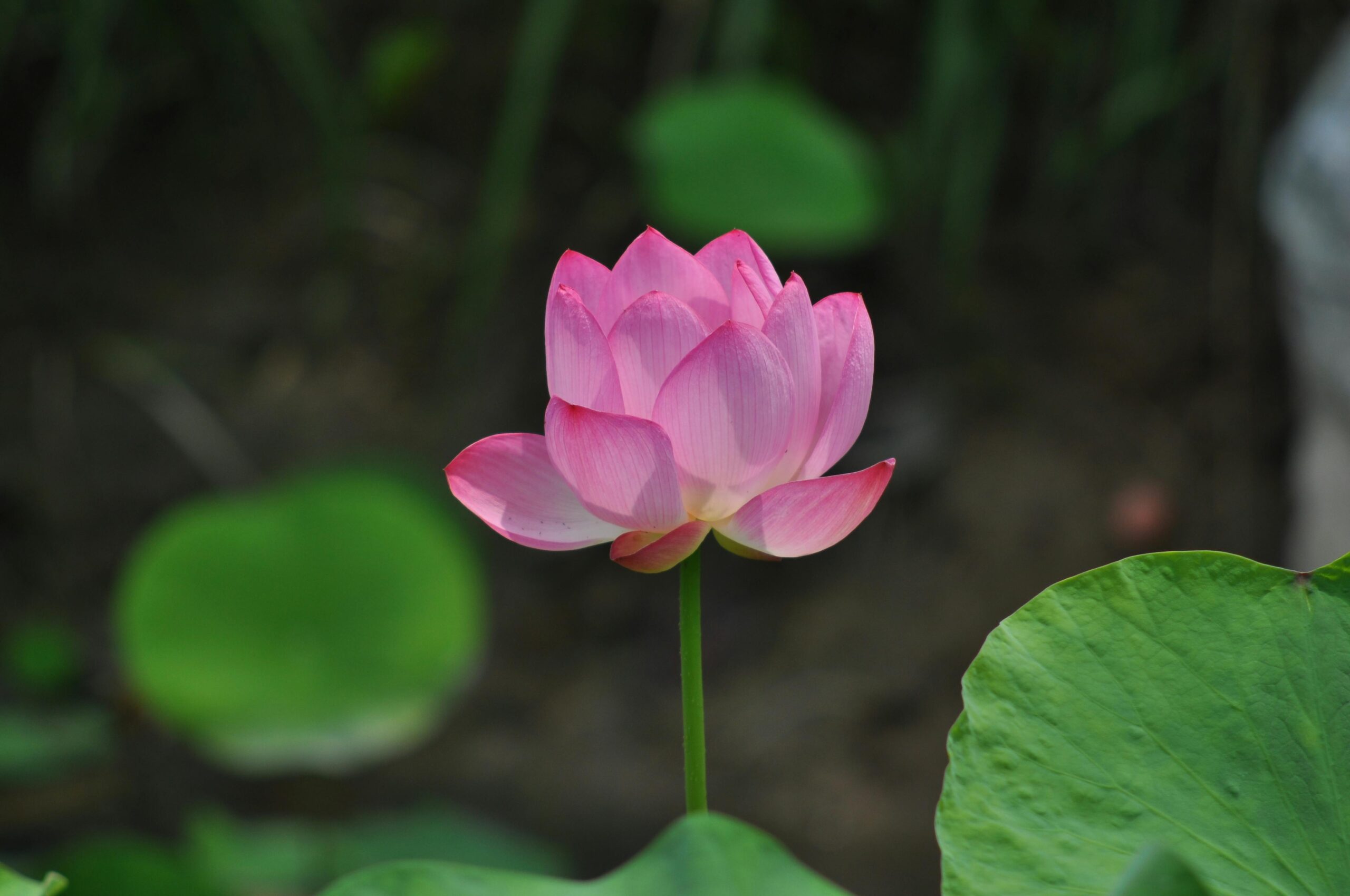In our fast-paced modern world, finding moments of tranquility has become increasingly rare. Combining meditation with nature offers a powerful antidote to stress, anxiety, and disconnection.
The ancient practice of meditation has been transformed by our understanding of how natural environments amplify its benefits. When we step outside to meditate, we’re not simply changing our location—we’re tapping into an evolutionary connection that runs deep within our biology. The rustle of leaves, the warmth of sunlight, and the earthy scent of soil all work together to create an optimal environment for inner peace.
Research consistently shows that both meditation and nature exposure independently reduce stress hormones, lower blood pressure, and improve mental clarity. When combined, these practices create a synergistic effect that exceeds the sum of their individual benefits. This article explores how you can harness the transformative power of meditating in natural settings to cultivate lasting peace and serenity in your life.
🌿 The Science Behind Nature’s Calming Influence
Scientists have discovered compelling evidence for what many cultures have intuitively known for centuries: nature heals. The Japanese practice of “forest bathing” or shinrin-yoku has been extensively studied, revealing measurable physiological changes that occur when we immerse ourselves in natural environments.
When we spend time in nature, our bodies produce lower levels of cortisol, the primary stress hormone. Our nervous system shifts from the sympathetic “fight or flight” mode to the parasympathetic “rest and digest” state. This biological shift creates the perfect foundation for meditation practice, allowing us to access deeper states of relaxation more quickly than we might indoors.
Natural environments also engage our attention in a gentle, effortless way that researchers call “soft fascination.” Unlike the demanding attention required by screens and urban environments, nature captures our interest without depleting our mental resources. This allows our directed attention systems to rest and recover, reducing mental fatigue and creating space for meditative awareness.
The Biophilia Effect in Meditation
The biophilia hypothesis suggests that humans possess an innate tendency to seek connections with nature and other forms of life. This deep-rooted affinity means that natural settings don’t just provide a pleasant backdrop for meditation—they actively enhance our capacity for mindfulness and present-moment awareness.
Studies using EEG measurements have shown that brain wave patterns during nature meditation display increased alpha and theta waves, associated with relaxed alertness and deep meditative states. These patterns emerge more readily outdoors than in artificial environments, suggesting that nature itself acts as a meditation facilitator.
🧘 Creating Your Outdoor Meditation Practice
Beginning a nature meditation practice doesn’t require exotic locations or perfect conditions. Whether you have access to wilderness areas, local parks, or simply a tree-lined street, you can establish a meaningful practice that brings peace and serenity into your daily life.
The key is consistency and intentionality. Start by identifying accessible natural spaces in your area. These might include botanical gardens, riverside paths, beaches, forest trails, or even your own backyard. The “best” location is simply one you can visit regularly and where you feel a sense of safety and comfort.
Essential Preparations for Outdoor Meditation
Unlike indoor meditation, practicing in nature requires some practical considerations. Dress appropriately for the weather, choosing layers that allow you to remain comfortable if temperatures change. Bring a waterproof mat or cushion if you plan to sit on the ground, and consider insect repellent during warmer months.
Choose your timing wisely. Early morning offers cooler temperatures, fewer people, and the special quality of dawn light. Evening practice provides beautiful sunset vistas and the transition into dusk. Midday meditation connects you with the full energy of the sun, though it may be less comfortable in hot climates.
🌊 Different Natural Environments for Meditation
Each type of natural setting offers unique qualities that can enhance different aspects of your meditation practice. Understanding these characteristics helps you choose environments that align with your intentions and needs.
Forest and Woodland Meditation
Forests provide enclosure, shade, and a rich sensory environment. The dappled light filtering through leaves creates visual softness, while the sounds of birds and rustling branches offer natural white noise that masks urban distractions. Forest air contains higher concentrations of phytoncides—airborne chemicals released by trees that have been shown to boost immune function and reduce stress.
When meditating in forests, you can practice tree meditation by sitting with your back against a sturdy trunk. This physical connection grounds your practice while the tree’s stability becomes a metaphor for your own inner strength and rootedness.
Water-Based Meditation Settings
Rivers, lakes, oceans, and streams provide dynamic meditation environments where the sound and movement of water become focal points for practice. Water’s flowing nature makes it particularly suitable for meditations on impermanence, letting go, and emotional release.
Beach meditation combines multiple elements: the rhythmic sound of waves, the vastness of the horizon, the texture of sand, and the negative ions abundant near moving water. These factors work together to create deeply relaxing conditions that facilitate extended meditation sessions.
Mountain and Elevated Terrain
High places offer expansive views that naturally invoke perspectives on life’s broader context. The physical effort required to reach elevated meditation spots can serve as a form of moving meditation, preparing your body and mind for stillness once you arrive.
Mountain meditation often incorporates elements of the sky—clouds, wind, and changing light. These dynamic features teach us about the nature of thoughts and emotions, which pass through awareness like weather patterns across the sky.
🎯 Techniques for Nature Meditation
While traditional meditation techniques work beautifully outdoors, nature also invites specialized approaches that leverage the unique qualities of natural environments.
Sensory Awareness Meditation
This practice involves systematically engaging each sense to anchor your awareness in the present moment. Begin with hearing, noting the layers of sound around you—distant and close, constant and intermittent. Move to physical sensations: temperature, breeze, the contact between your body and the earth.
Progress to sight, observing colors, patterns, and movements with soft, unfocused attention. Notice scents carried on the air—earth, plants, moisture. If safe and appropriate, you might even incorporate taste by bringing awareness to your mouth and breath.
Walking Meditation in Natural Settings
Walking meditation transforms the simple act of moving through nature into a profound practice of mindfulness. Walk slowly and deliberately, coordinating your breath with your steps. Feel each phase of the walking motion: the lift, the move, the place, the shift of weight.
Nature trails provide perfect environments for walking meditation, offering enough variation to maintain interest while providing a clear path that doesn’t require constant navigation decisions. The physical movement helps those who find seated meditation challenging, while still cultivating focused awareness.
Elemental Meditation Practice
Many contemplative traditions work with the classical elements—earth, water, fire (sun), air, and space. In nature, these elements are vividly present and can become meditation objects that connect you with fundamental aspects of existence.
Earth meditation involves feeling your weight, gravity, and groundedness. Water meditation observes fluidity and adaptation. Sun meditation absorbs warmth and light as metaphors for awareness and vitality. Wind meditation notices the invisible made visible through movement. Sky meditation contemplates vastness and openness.
⏰ Overcoming Challenges in Outdoor Meditation
Meditating in nature presents unique obstacles that indoor practitioners don’t face. Rather than viewing these as problems, consider them opportunities to deepen your practice and flexibility.
Managing Distractions and Discomfort
Nature is alive with activity—insects, animals, weather changes, and other people. Instead of fighting these interruptions, incorporate them into your practice. When a dog barks or a mosquito buzzes, notice your reaction without adding stories or judgments. This develops equanimity more effectively than perfectly controlled conditions ever could.
Physical discomfort from temperature, sitting surfaces, or posture requires a balanced approach. Distinguish between discomfort that invites exploration and sensations that signal potential harm. Adjust your position as needed without making every minor discomfort a crisis. This cultivates body awareness and wise responsiveness.
Weather as Teacher
Rather than meditating only in perfect conditions, occasionally practice in light rain, wind, or cold. These experiences teach impermanence, acceptance, and resilience. They remind us that peace doesn’t depend on external circumstances being exactly as we prefer.
Always prioritize safety—avoid lightning storms, extreme heat or cold, and conditions beyond your preparation. But within reasonable limits, weather variations enrich rather than diminish your practice.
📱 Technology and Nature Meditation
While it might seem paradoxical to bring technology into nature meditation, certain apps can support your practice, especially as you develop your skills and routines.
Meditation timer apps allow you to set practice duration without constantly checking your watch, helping you fully immerse in the experience. Some applications offer nature-specific guided meditations designed for outdoor use, providing structure while you build confidence in your practice.
Sound identification apps can deepen your connection with nature by helping you learn the birds, insects, and other creatures sharing your meditation space. This knowledge enriches future sessions as you recognize the voices around you, creating a sense of community with the natural world.
However, maintain boundaries with technology. Use airplane mode to prevent notifications, and resist the urge to document every session with photos. The deepest benefits come from undivided presence, not from capturing content for social media.
🌱 Building a Sustainable Practice
Like any worthwhile endeavor, nature meditation yields its greatest benefits through regular, sustained practice. Creating habits that endure requires realistic expectations and flexible approaches.
Starting Small and Building Gradually
Begin with brief sessions—even five minutes outdoors can provide noticeable benefits. Consistency matters more than duration, especially in the early stages. Three times weekly for ten minutes will serve you better than monthly marathon sessions that feel like obligations.
As nature meditation becomes familiar, gradually extend your practice time. You’ll naturally develop preferences for certain locations, times of day, and techniques. Honor these preferences while occasionally varying your routine to prevent it from becoming mechanical.
Seasonal Adaptations
Rather than abandoning outdoor meditation when seasons change, adapt your approach. Winter practice might involve shorter sessions, warmer clothing, and sun-facing positions. Summer could mean early morning or evening sessions to avoid heat, with additional hydration.
Each season offers unique gifts: spring’s renewal energy, summer’s abundance, autumn’s releasing quality, and winter’s stillness. Aligning your practice with seasonal rhythms connects you with natural cycles and prevents monotony.
💫 The Ripple Effects of Nature Meditation
Regular nature meditation practice extends benefits far beyond the moments spent in formal practice. People who maintain consistent outdoor contemplative routines report wide-ranging positive changes in their lives.
Stress resilience improves markedly, with practitioners reporting they recover more quickly from difficulties and maintain perspective during challenges. Sleep quality often enhances as the nervous system learns to downregulate more effectively. Relationships benefit from the increased patience, presence, and emotional regulation that meditation cultivates.
Many practitioners develop a stronger environmental awareness and commitment to conservation. When you regularly sit with trees, rivers, and wildlife, these become personal relationships rather than abstract concepts. This naturally translates into lifestyle choices that honor and protect natural systems.
Integrating Insights into Daily Life
The peace discovered during nature meditation can infuse ordinary moments throughout your day. The steadiness you feel while sitting beneath a tree can be recalled during a stressful meeting. The acceptance you practiced with changing weather can help you navigate unexpected life changes.
Create bridges between your formal practice and daily life by taking brief “nature pauses”—moments when you step outside, take a few conscious breaths, and reconnect with the sky, trees, or simply the air. These micro-practices maintain your connection to the serenity cultivated during longer sessions.
🌟 Deepening Your Connection Over Time
As your nature meditation practice matures, you may notice your relationship with the natural world transforming. What began as using nature as a meditation venue evolves into genuine communion with the living systems around you.
This deepening manifests as increased sensitivity to subtle changes—the first signs of seasonal shifts, the particular quality of light at different times, the personalities of specific locations. You might develop favorite spots that feel like old friends, places that hold your practice and seem to welcome your return.
Advanced practitioners often report experiences of interconnection and belonging that transcend intellectual understanding. These moments, sometimes called “peak experiences” or “nature mysticism,” reveal the profound peace that comes from recognizing yourself as an integral part of the natural world rather than a separate observer.

🌈 Finding Your Unique Path to Serenity
There is no single “correct” way to practice nature meditation. Your ideal approach will reflect your personality, circumstances, and intentions. Some people thrive with structured routines, while others prefer spontaneous sessions when the mood strikes. Both approaches work—what matters is finding what you’ll actually sustain.
Experiment with different natural settings, times of day, and techniques. Notice what resonates and what feels forced. Your practice should feel nourishing rather than like another item on an overwhelming to-do list. If it becomes a burden, simplify until you rediscover the joy that drew you outside in the first place.
Consider keeping a simple meditation journal, noting not just what you practiced but how you felt afterward, what you noticed, and any insights that emerged. Over time, patterns will reveal themselves, guiding you toward the approaches that serve your unique path to peace and serenity.
The power of meditation in nature lies not in perfection but in presence. Each time you step outside with intention, breathe consciously, and open your awareness to the world around you, you’re participating in an ancient human practice that has sustained wisdom seekers across cultures and centuries. This simple act—sitting still in nature, paying attention—offers profound medicine for our overstimulated, disconnected modern lives.
Begin today, wherever you are, with whatever nature surrounds you. The peace you seek is already present, waiting in the rustle of leaves, the warmth of sunlight, and the steady rhythm of your breath meeting the world. Step outside, sit down, and discover the transformative serenity that emerges when meditation and nature combine. 🌿
Toni Santos is an eco-spirituality researcher and planetary healing writer exploring how earth-based rituals, nature-centred philosophy and sacred ecology reconnect humanity with the living planet. Through his work on environment, consciousness and ritual, Toni examines how our relationship with Earth influences our awakening and actions. Passionate about land-wisdom, ritual practice and ecological integration, Toni focuses on how spiritual life can emerge from ecological awareness and how healing flows from land, water and community. His work highlights the union of ecology, mind and spirit — guiding readers toward a more grounded, relational, and sacred life. Blending ritual studies, environmental philosophy and ecological design, Toni writes about the human-earth story — helping readers understand how living systems, community and meaning intertwine in planetary healing. His work is a tribute to: The sacred connection between humanity and Earth’s living systems The power of ritual to rekindle land-memory and collective renewal The vision of ecology as sacred, relational and transformational Whether you are a ritual practitioner, ecological thinker or planet-healer, Toni Santos invites you to explore the path of planetary awakening — one ritual, one ecosystem, one transformation at a time.




